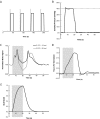Brain oxygenation responses to an autonomic challenge: a quantitative fMRI investigation of the Valsalva manoeuvre
- PMID: 26318855
- PMCID: PMC5005835
- DOI: 10.1007/s11357-015-9833-6
Brain oxygenation responses to an autonomic challenge: a quantitative fMRI investigation of the Valsalva manoeuvre
Abstract
In late age, the autonomic nervous system (ANS) has diminished ability to maintain physiological homeostasis in the brain in response to challenges such as to systemic blood pressure changes caused by standing. We devised an fMRI experiment aiming to map the cerebral effects of an ANS challenge (Valsalva manoeuvre (VM)). We used dual-echo fMRI to measure the effective transverse relaxation rate (R2*, which is inversely proportional to brain tissue oxygenation levels) in 45 elderly subjects (median age 80 years old, total range 75-89) during performance of the VM. In addition, we collected fluid-attenuated inversion recovery (FLAIR) data from which we quantified white matter hyperintensity (WMH) volumes. We conducted voxelwise analysis of the dynamic changes in R2* during the VM to determine the distribution of oxygenation changes due to the autonomic stressor. In white matter, we observed significant decreases in oxygenation levels. These effects were predominantly located in posterior white matter and to a lesser degree in the right anterior brain, both concentrated around the border zones (watersheds) between cerebral perfusion territories. These areas are known to be particularly vulnerable to hypoxia and are prone to formation of white matter hyperintensities. Although we observed overlap between localisation of WMH and triggered deoxygenation on the group level, we did not find significant association between these independent variables using subjectwise statistics. This could suggest other than recurrent transient hypoxia mechanisms causing/contributing to the formation of WMH.
Figures



References
Publication types
MeSH terms
Grants and funding
LinkOut - more resources
Full Text Sources
Other Literature Sources
Medical
